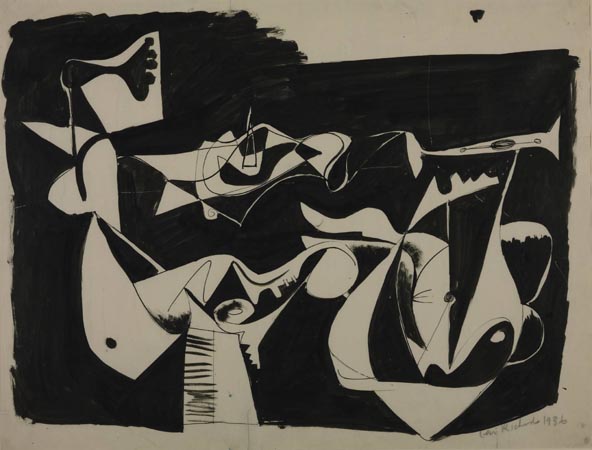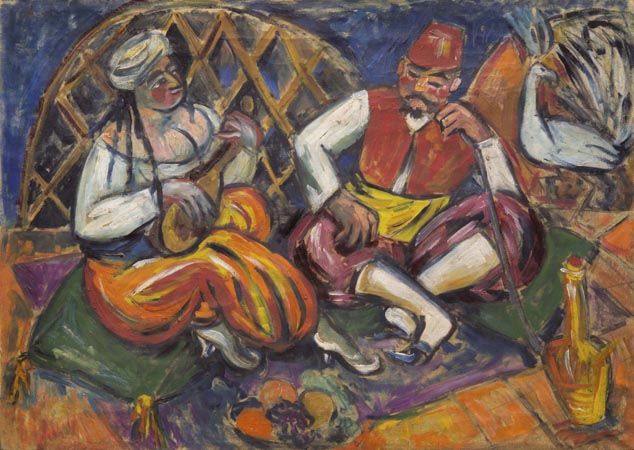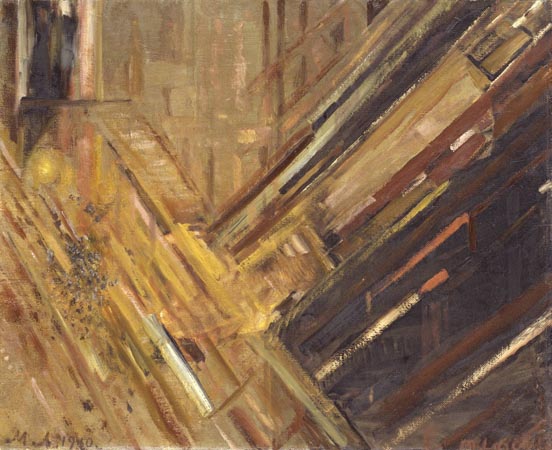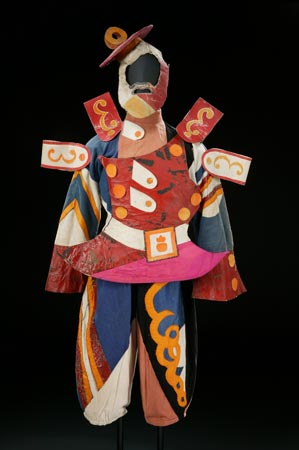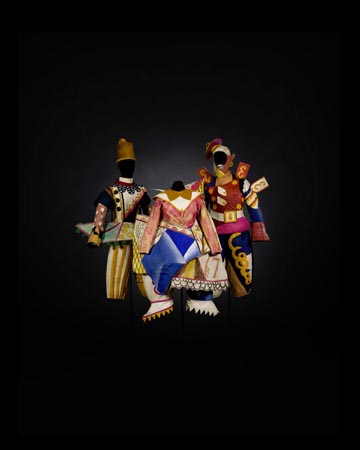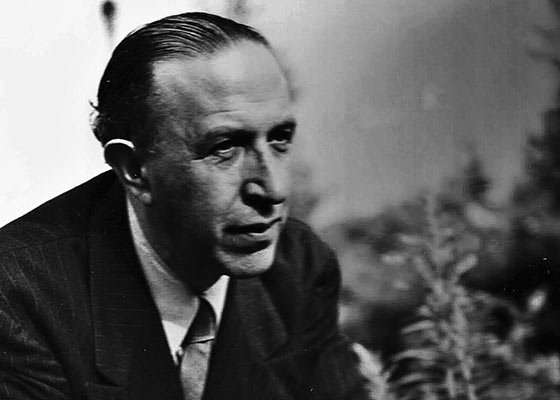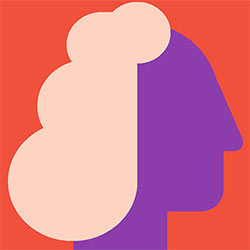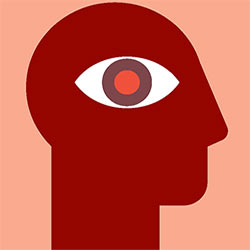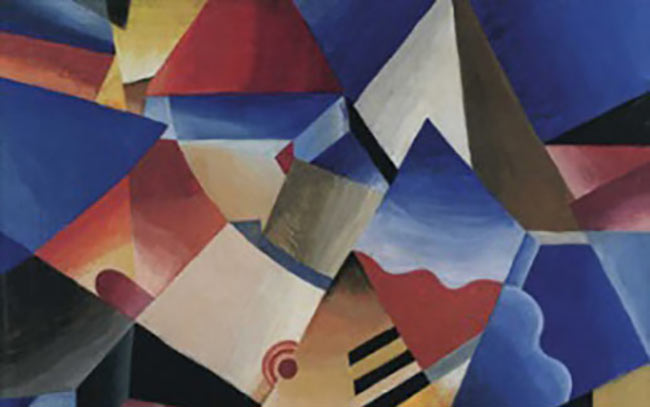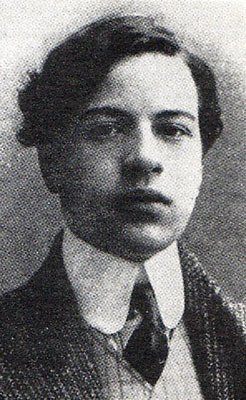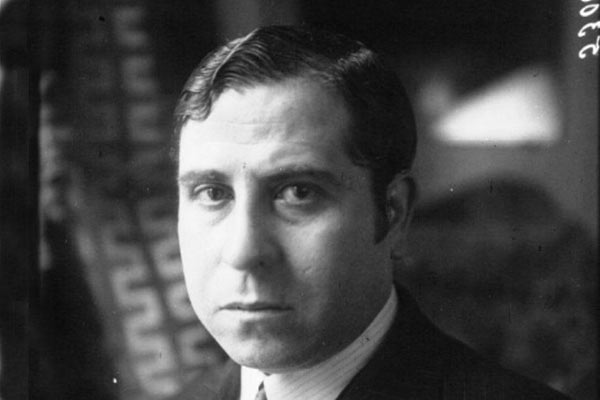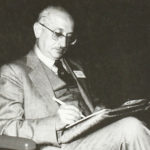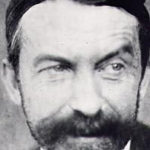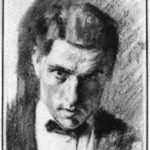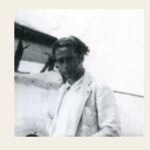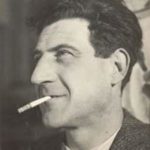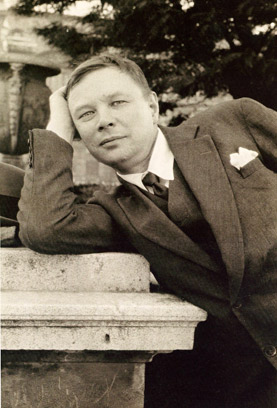
Lariónov Mikhail Fiódorovich
(English)
Born 1881 in Tiraspol. He was the son of Fiodor Mikhailovich Larionov, a doctor and a pharmacist, and Aleksandra Fiodorovna Petrovskaia, but he grew up in his grandparents’ home in Tiraspol. He attended the Voskresenskii Technical High School in Moscow and in 1898 entered the Moscow School of Painting, Sculpture and Architecture under Isaac Levitan and Valentin Serov. Here he met Natalia Goncharova in 1900, who remained his lifelong companion. His work soon caught the attention of colleagues and critics and in 1906 he was invited to exhibit with the Union of Russian Artists and to participate in the Russian Art exhibition at the Salon d’Automne in Paris. When Larionov met Nikolai Riabushinskii, editor of the Zolotoe runo [the Golden Fleece], the famous art mecenas became the artist’s chief patron and in 1908 helped him organize the Golden Fleece exhibition of the modern French painting in Moscow, which included paintings by international avant-garde artists such as Matisse, Derain, Braque, Gauguin and Van Gogh. As a result of this exhibition, many artists, including Larionov, turned away from Symbolism and started to experiment with Post-Impressionism. In 1910, Larionov was expelled by the Moscow School of Painting for organizing a demonstration against the school’s teaching methods. He was the founder of the Jack of Diamonds group (1909-1911), and with them he exhibited a remarkable series of paintings, among them the Soldiers (1910), created during his military service. His first solo show was for one day in Moscow in 1911. The artist soon deserted the Jack of Diamonds for the more radical Donkey’s Tail (1912-1913), which held an exhibition in 1912. He gave names to both groups. In 1912 he initiated two very important movements: Rayism (Rayonism; Luchism) and Neo-primitivism. Rayonism was inspired by Italian Futurism and Neo-primitivism and represented a development of the artist’s Fauvist and Expressionist interests.
Rayism was officially launched at the Target exhibition of 1913. In 1914 he traveled with Goncharova to Paris. They held an exhibition at the Gallerie Paul Guillaume. When the war began, they returned to Russia and Larionov was drafted into the army. He was injured in the battle of the Masurian Lakes and spent three months in a hospital. The injury affected his ability to concentrate and resulted in the decline of his artistic energy. In 1915 he traveled with Goncharova to Switzerland, at the request of Sergei Diaghilev. There he designed for the ballet and gained success. While traveling through Spain and Italy he designed three more ballets, all equally successful. In 1919 he settled permanently in Paris, where he acted as Goncharova’s manager. He spent the rest of his life in France and obtained the French citizenship. Throughout the decade he worked with Diaghilev as a designer and artistic adviser. Following Diaghilev’s death in 1929, he resumed painting and also worked occasionally for the ballet. He and Goncharova were granted French citizenship in 1938. In 1950 he suffered a stroke that seriously handicapped his activity and he spent the last 14 years of his life in poverty. Died 1964 in Fontenay-aux-Roses, near Paris.
(Spanish)
Mikhail Fiódorovich Lariónov (Tiráspol,3 de junio de 1881 – Fontenay-aux-Roses, 10 de mayo de 1964), fue un pintor ruso de corte vanguardista que se inscribe en la llamada vanguardia rusa.
En Moldavia transcurre su juventud, en casa de sus abuelos donde se impregna para siempre de la belleza natural de los paisajes que le rodean, belleza que tendrá un papel significativo en su arte. Estudia en la Escuela de Pintura, Escultura y Arquitectura de Moscú (1898-1910).
En 1900 conoció a Natalia Goncharova y formó una relación de por vida con ella.
Mikhail Lariónov y Natalia Goncharova, se hacen amigos de Konstantín Korovin cuando éste entra como profesor en esta escuela en 1902. La enseñanza de Korovin cobra inmediatamente una importancia capital para el joven pintor. En 1903, Lariónov se relaciona con Serguéi Diáguilev, cuando hay una importante exposición del trabajo de Charles Rennie Mackintosh ; nace entonces una amistad muy fuerte y relaciones profesionales muy estrechas entre los dos hombres.
Lariónov produce entre 1914 y 1929 dibujos de vestuarios, decorados para las producciones teatrales de Serguéi Diáguilev. Goncharova y Lariónov trabajan juntos, se inspiran mutuamente, siguiendo a la vez caminos artísticos independientes. En 1908, Lariónov organiza un gran número de exposiciones, a las cuales participa también Goncharova. Está presente en la Exposición Internacional de Viena en 1907, en la Der Blaue Reiter (Múnich, 1912). Inspirados por el Futurismo, en 1913, Lariónov y Goncharova crean lo que puede considerarse como la primera escuela rusa original de pintura no-objetiva (arte abstracto), el Rayonismo.
Lariónov elaboró su manifiesto que se publicó en 1914. Fue reclutado para la guerra, que él consideró siempre, que ésta, le hizo perder parte de su creatividad y perturbó para siempre su vida artística. Sin embargo seguirá ofreciendo su contribución a la pintura, a las artes gráficas y al mundo del teatro. Publicará sus propios escritos e ilustrará todavía numerosas obras. Mikhail Lariónov muere en Francia en 1964, solo dos años tras la desaparición de Goncharova.
En 1911 aparece el rayonismo (del francés rayonner, irradiar), que tuvo como figura principal a Mikhail Lariónov, donde se mezclaban propuestas cubistas y futuristas, sin anécdota, en pos de una independencia de los valores plásticos «en sí mismos».
En 1919, Mikhail Lariónov y Natalia Goncharova se salen de la asociación Sota de Diamantes, debido a la excesiva atención que se le presta al arte occidental en detrimento de las innovaciones rusas; organizan su propia exposición con varios simpatizantes, la titulan La Cola de Burro y participan, entre otros, Kazimir Malévich, Tatlin y el recién llegado Marc Chagall.
